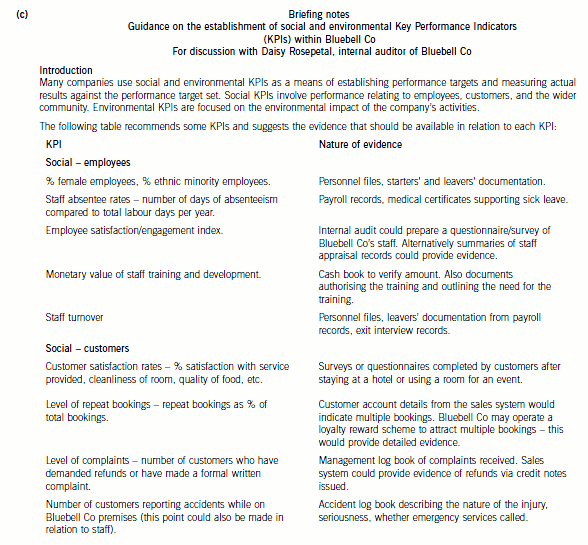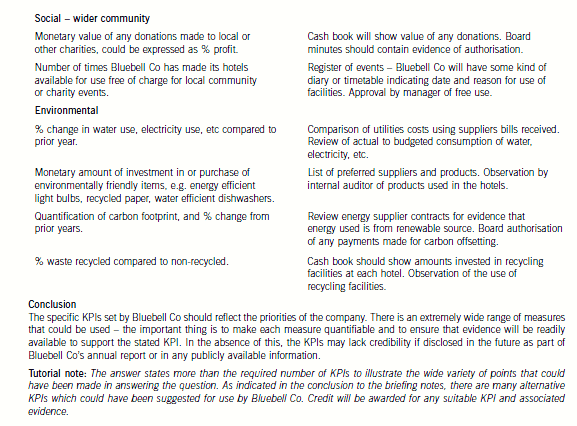ACCA 全面机考政策出来了吗?机考注需要注意什么?
发布时间:2020-01-04
最近有小伙伴问,ACCA全面机考政策是什么?ACCA机考注意事项有哪些?今天,51题库考试学习网带领大家一起来了解一下。
2018年下半年ACCA考试在中国地区进行了改革,将PM-FM阶段的课程全部由笔试改革机考考试。随着机考改革的深入,ACCA 战略阶段从2020年3月起,也将在指定地区率先引入SP阶段的机考,同时,指定区域将不再提供纸质考试。
中国考点会在2021年3月引入全面机考,但政策时刻在变化,请大家保持高度关注。
ACCA共要考过13门课程,前四科是随时机考,PM-FM在2018年3月份后开始实行全部机考,而战略阶段只有笔试。对此,ACCA官方有着明确的要求:
1、AB-LW课程为随时机考。学员可在任一时间进行报考和报考,随时机考的考试成绩将在当天公布。
2、PM-FM自2018年开始,全部实施了分季机考模式。学员需要在官方规定的3/6/9/12月考试季内进行考试,考试成绩大约会在考试结束后的40天公布!
3、SBL、SBR及选修课程均为笔考模式。从整体的发展趋势来看,ACCA全部改革为机考考试已经不远。不过,相信它会有一个逐步的过程。而且在新改革的应用技能课程考试中,学员反应良好,通过率也有所上升。可见,对于新的机考模式,大部分学员还是能够从容应对的。当然,对于笔考,机考的确是有些差别的。这主要体现在:
1、大题部分需要通过计算机进行解答,相较于笔试,计算机打字能力和某些公式的熟练度会间接地影响考试结果;
2、考试时间有所不同。目前,应用技能课程的机考时间均为3个小时,而战略课程的笔试一般为3小时15分钟,SBL为4个小时。
好了,机考的注意事项有哪些呢?
1.FIA的学员F1—F3可随意顺序考试,F1—F3全部通过以后才可报考F4,ACCA学员F1—F4可随意顺序报考;
2、报名并支付成功后,请自行打印准考证,考生需携带准考证入场考试,考试过程中严禁携带各种通讯工具;
3、开考15分钟后,考生不得进入考点参加当天科目考试;
4、考生对试题有疑难时,不得向监考员询问;考试过程中,原则上不得上厕所,若确需上厕所,应举手示意,经监考员同意,由场外工作人员陪同前往并返回考场,考生耽误的考试时间一律不补,经批准离开考场后返回的考生,须再次进行安检。未经监考员同意而擅自离开考场的考生不得再返回考场继续参加考试。
说明:以上信息来源于ACCA英文官网,仅供参考,具体以ACCA协会更新信息为准。
如果还想了解更多信息,可以关注51题库考试学习网的哦!
下面小编为大家准备了 ACCA考试 的相关考题,供大家学习参考。
6 Discuss how developments in each of the following areas has affected the scope of the audit and the audit work
undertaken:
(a) fair value accounting; (6 marks)
6 DEVELOPMENTS
General comments
Tutorial note: The following comments, that could be made in respect of any of the three areas of development, will be given
credit only once.
■ Audit scope – the scope of a statutory audit should be as necessary to form. an audit opinion (i.e. unlimited).
■ Audit work undertaken – the nature, timing and extent of audit procedures should be as necessary to implement the overall
audit plan.
(a) Fair value accounting
■ Different definitions of fair value exist (among financial reporting frameworks or for different assets and liabilities within
a particular framework). For example, under IFRS it is ‘the amount for which an asset could be exchanged (or a liability
settled) between knowledgeable, willing parties in an arm’s length transaction’.
■ The term ‘fair value accounting’ is used to describe the measurement and disclosure of assets and/or liabilities at fair
value and the charging to profit and loss (or directly to equity) of any changes in fair value measurements.
■ Fair value accounting concerns measurements and disclosures but not initial recognition of assets and liabilities in
financial statements. It does not then, for example, affect the nature, timing and extent of audit procedures to confirm
the existence and completeness of rights and obligations.
■ Fair value may be determined with varying degrees of subjectivity. For example, there will be little (if any) subjectivity
for assets bought and sold in active and open markets that readily provide reliable information on the prices at which
exchange transactions occur. However, the valuation of assets with unique characteristics (or entity-specific assets) often
requires the projection and discounting of future cash flows.
■ The audit of estimates of fair values based on valuation models/techniques can be approached like other accounting
estimates (in accordance with ISA 540 ‘Audit of Accounting Estimates’). However, although the auditor should be able
to review and test the process used by management to develop the estimate, there may be:
? a much greater need for an independent estimate (and hence greater reliance on the work of experts in accordance
with ISA 620);
? no suitable subsequent events to confirm the estimate made (e.g. for assets that are held for use and not for
trading).
Tutorial note: Consider, for example, how the audit of ‘in-process research and development’ might compare with that
for an allowance for slow-moving inventory.
■ Different financial reporting frameworks require or permit a variety of fair value measures and disclosures in financial
statements. They also vary in the level of guidance provided (to preparers of the financial statements – and hence their
auditors). Under IFRS, certain fair values are based on management intent and ‘reasonable supportable assumptions’.
■ The audit of management intent potentially increases the auditor’s reliance on management representations. The auditor
must obtain such representations from the highest level of management and exercise an appropriate degree of
professional scepticism, being particularly alert to the implications of any conflicting evidence.
■ A significant development in international financial reporting is that it is no longer sufficient to report transactions and
past and future events that may only be possible. IAS 1 ‘Presentation of Financial Statements’ (Revised) requires that
key assumptions (and other key sources of estimation uncertainty) be disclosed. This requirement gives rise to yet
another area on which auditors may qualify their audit opinion, on grounds of disagreement, where such disclosure is
incorrect or inadequate.
■ Perhaps one of the most significant impacts of fair value accounting on audit work is that it necessarily increases it.
Consider for example, that even where the fair value of an asset is as easily vouched as original cost, fair value is
determined at least annually whereas historic cost is unchanged (and not re-vouched to original purchase
documentation).
A new internal auditor, Daisy Rosepetal, has recently joined Bluebell Co. She has been asked by management to
establish and to monitor a variety of social and environmental Key Performance Indicators (KPIs). Daisy has no
experience in this area, and has asked you for some advice. It has been agreed with Bluebell Co’s audit committee
that you are to provide guidance to Daisy to help her in this part of her role, and that this does not impair the
objectivity of the audit.
(c) Recommend EIGHT KPIs which could be used to monitor Bluebell Co’s social and environmental
performance, and outline the nature of evidence that should be available to provide assurance on the
accuracy of the KPIs recommended. Your answer should be in the form. of briefing notes to be used at a
meeting with Daisy Rosepetal. (10 marks)
Note: requirement (c) includes 2 professional marks.


12 Which of the following statements are correct?
(1) Contingent assets are included as assets in financial statements if it is probable that they will arise.
(2) Contingent liabilities must be provided for in financial statements if it is probable that they will arise.
(3) Details of all adjusting events after the balance sheet date must be given in notes to the financial statements.
(4) Material non-adjusting events are disclosed by note in the financial statements.
A 1 and 2
B 2 and 4
C 3 and 4
D 1 and 3
(c) On 1 May 2007 Sirus acquired another company, Marne plc. The directors of Marne, who were the only
shareholders, were offered an increased profit share in the enlarged business for a period of two years after the
date of acquisition as an incentive to accept the purchase offer. After this period, normal remuneration levels will
be resumed. Sirus estimated that this would cost them $5 million at 30 April 2008, and a further $6 million at
30 April 2009. These amounts will be paid in cash shortly after the respective year ends. (5 marks)
Required:
Draft a report to the directors of Sirus which discusses the principles and nature of the accounting treatment of
the above elements under International Financial Reporting Standards in the financial statements for the year
ended 30 April 2008.
(c) Acquisition of Marne
All business combinations within the scope of IFRS 3 ‘Business Combinations’ must be accounted for using the purchase
method. (IFRS 3.14) The pooling of interests method is prohibited. Under IFRS 3, an acquirer must be identified for all
business combinations. (IFRS 3.17) Sirus will be identified as the acquirer of Marne and must measure the cost of a business
combination at the sum of the fair values, at the date of exchange, of assets given, liabilities incurred or assumed, in exchange
for control of Marne; plus any costs directly attributable to the combination. (IFRS 3.24) If the cost is subject to adjustment
contingent on future events, the acquirer includes the amount of that adjustment in the cost of the combination at the
acquisition date if the adjustment is probable and can be measured reliably. (IFRS 3.32) However, if the contingent payment
either is not probable or cannot be measured reliably, it is not measured as part of the initial cost of the business combination.
If that adjustment subsequently becomes probable and can be measured reliably, the additional consideration is treated as
an adjustment to the cost of the combination. (IAS 3.34) The issue with the increased profit share payable to the directors
of Marne is whether the payment constitutes remuneration or consideration for the business acquired. Because the directors
of Marne fall back to normal remuneration levels after the two year period, it appears that this additional payment will
constitute part of the purchase consideration with the resultant increase in goodwill. It seems as though these payments can
be measured reliably and therefore the cost of the acquisition should be increased by the net present value of $11 million at
1 May 2007 being $5 million discounted for 1 year and $6 million for 2 years.
声明:本文内容由互联网用户自发贡献自行上传,本网站不拥有所有权,未作人工编辑处理,也不承担相关法律责任。如果您发现有涉嫌版权的内容,欢迎发送邮件至:contact@51tk.com 进行举报,并提供相关证据,工作人员会在5个工作日内联系你,一经查实,本站将立刻删除涉嫌侵权内容。
- 2020-02-27
- 2020-02-27
- 2020-01-10
- 2020-01-10
- 2020-02-27
- 2021-04-04
- 2020-01-09
- 2020-01-08
- 2020-01-10
- 2020-01-09
- 2020-01-10
- 2020-01-08
- 2020-02-23
- 2020-09-03
- 2020-01-10
- 2021-01-13
- 2020-01-09
- 2020-01-10
- 2021-01-22
- 2020-01-10
- 2020-01-10
- 2020-07-04
- 2020-01-09
- 2020-05-20
- 2020-01-09
- 2020-01-10
- 2021-10-03
- 2020-04-19
- 2020-09-03
- 2020-08-14